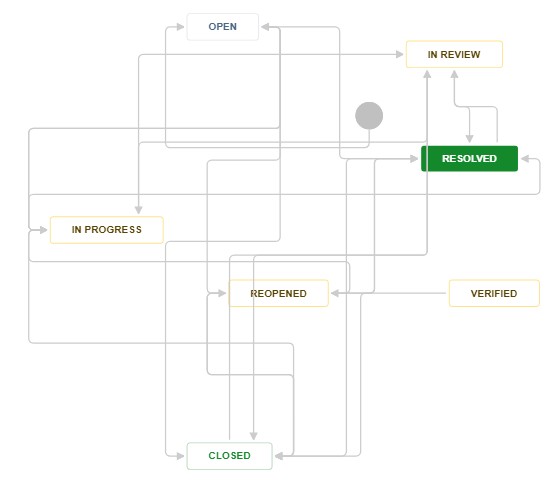About
In a process based model, every entity has a lifecycle (Status) that shows a finite number of distinct states.
The status shows the state of an entity ie:
<MATH> State + Us = Status </MATH>
This process may be implemented/visualized as a finite automata
See also: What is State? Data and Programming
Visualization
Sequence:
State:
Example
Store Transaction
Non-deterministic Finite automata representing a transaction between a customer, a store and a bank
Every actor needs to make a transition (going from one state to another) when an action is executed. (An action is a label on a arc) (ie it is not possible for the system as a whole to die because the customer automaton has no response to an action)
where:
- loops on certain states are irrelevant action (ie actions that must be ignored - highlighted in yellow) (To save space the labels were combined onto one arc rather than showing several arcs with the same heads and tails but different labels)
- for the store: cancel (each of its seven states has a loop labeled cancel)
- for the bank: pay, ship
- for the customer: ship, redeem and transfer
- a customer initiates the following actions: pay, cancel
- a bank may: redeem, transfer
- a store may: ship
chapter 2.1.2 - page 55 from Hopcroft, Motwani, Ullman, Automata Theory, Languages, and Computation 3rd Edition. pdf
Jira ticket
Source: Jenkins Jira ticket
Communication Protocol
communications protocols (such as protocols for secure exchange of information, …)
Web Application
Every web application has a lifecycle. Common tasks, such as:
- handling incoming requests,
- decoding parameters,
- modifying and saving state,
- and rendering web pages to the browser,
are all performed during a web application lifecycle.
Some web application frameworks hide the details of the lifecycle from you, whereas others require you to manage them manually.
Business Process
The lifecycle of a web application starts and ends with the following activity:
- The client makes a request for the web page,
- and the server responds with the page.
The lifecycle consists of two main phases: execute and render.


